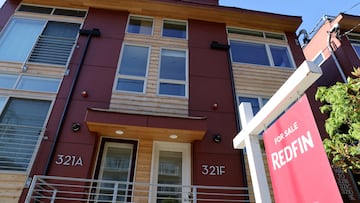California rental vacancy rate nears historic low driving prices up
The rental vacancy rate in the Golden State sits at just under four percent, the second lowest rate recorded since 1986. How does this impact the market?


Across the Golden State, many residents are struggling to keep up with the rapidly increasing cost of rent and housing. From 1986 to 2023, the lowest rental vacancy rate recorded was 3.6 percent in 2016. This indicator looks at the percent of total rental properties on the market that are available and without tenants. Last month, this rate reached the second lowest level recorded, clocking in at 3.9 percent.
How does the low rental vacancy rate impact the rental market?
This short supply of rental properties is having inflationary effects on the market, where on average, rents have increased by around fourteen percent since 2019.
According to Zillow, since 2021, rents in Los Angeles and San Diego have increased fifteen and twenty percent, respectively, and up north in Sacramento, renters are paying around thirteen percent more. Basic economic principles center on the fact that if demand is higher than demand, prices will rise. The low rental vacancy, and the increasing price of houses on the market, are creating a situation where the landlords can increase their prices because renters are forced to compete for a shrinking supply of properties.
| County | 2019 Median Rent | 2020 Median Rent | 2021 Median Rent | 2022 Median Rent | March 2023 Median Rent |
|---|---|---|---|---|---|
| Los Angeles | $2,392.57 | $2,386.90 | $2,484.05 | $ 2,819.90 | $2,857.14 |
| Sacramento | $1,619.49 | $1,661.31 | $ 1,887.84 | $ 2,012.12 | $ 2,139.03 |
| San Diego | $2,202.33 | $2235.69 | $2,476.76 | $2,942.55 | $2,976.77 |
| San Francisco | $3,557.33 | $3,501.34 | $3,209.51 | $3,464.07 | $3,444.39 |
According to the California Budget and Policy Center (CBPC), around one in six renters with an income under $50,000 owe back rent. If prices continue to rise without workers at the lower end of the earning spectrum seeing an increase in real wages, the number of tenants behind on their rent could continue to grow. For context, in 2021, around 30.5 of households in the state had an annual income under $50,000.
Related stories
Read more from AS USA:
- Workers in Alaska, New Jersey, and Wyoming have been hit hardest by layoffs this year
- What the experts say about the housing market in 2023
- What to do if you didn’t file your taxes on time?
Affordable housing and the plight of children experiencing homelessness
These conditions have devastating impacts across society, and children are not shielded from the effects. In 2022, the CBPC also reported that the year prior, around 220,000 students were experiencing homelessness. “Latinx, Black, American Indian, Alaska Native, and Pacific Islander students were disproportionately likely to experience homelessness,” said the CBPC. Homelessness is hugely disruptive since it can lead to “chronic absenteeism causing them to lose critical access to curriculum and social structures that schools, educators, and peers offer.”